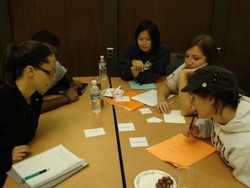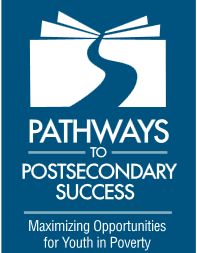
This blog focuses on my scholarship in my five research projects: learning assistance and equity programs, student peer study group programs, learning technologies, Universal Design for Learning, and history simulations. And occasional observations about life.
2016 Annotated Bibliograpy of Postsecondary Peer Cooperative Learning Programs Updated

This annotated bibliography does not attempt to be inclusive of this broad field of literature concerning peer collaborative learning. Instead, it is focused intentionally on a subset of the educational practice that shares a common focus with increasing student academic achievement and persistence towards graduation.
The seven student peer learning programs included in this bibliography meet the following characteristics: (a) the program must have been implemented at the postsecondary or tertiary level; (b) the program has a clear set of systematic procedures for its implementation that could be replicated by another institution; (c) program evaluation studies have been conducted and are available for review; (d) the program intentionally embeds learning strategy practice along with review of the academic content material; (e) the program outcomes include increased content knowledge, higher final course grades, higher pass rates, and higher college persistence rates; and (f) the program has been replicated at another institution with similar positive student outcomes. From a review of the professional literature, six programs emerged: (a) Accelerated Learning Groups (ALGs), (b) Emerging Scholars Program (ESP), (c) Peer Assisted Learning (PAL), (d) Peer-Led Team Learning (PLTL), (e) Structured Learning Assistance (SLA), (f) Supplemental Instruction (SI), and (g) Video-based Supplemental Instruction (VSI). As will be described in the following narrative, some of the programs share common history and seek to improve upon previous practices.Other programs were developed independently.
Regrets for scholarship I have overlooked. Please send me items you think should be included in the next edition. Happy reading.
2013 Report: Pathways to Postsecondary Success Maximizing Opportunities for Youth in Poverty

By Daniel Solórzano, Amanda Datnow, Vicki Park, and Tara Watford with Lluliana Alonso, Virginia Bartz, Christine Cerven, Nichole Garcia, Karen Jarsky, Nickie Johnson-Ahorlu, Makeba Jones, Maria Malagon, Jennifer Nations, Kelly Nielsen, Mike Rose, Yen Ling Shek, and Susan Yonezawa.
Within the context of the country’s economic downturn and its need for greater postsecondary participation, Pathways to Postsecondary Success: Maximizing Opportunities for Youth in Poverty was designed to provide scholarship and policy recommendations to help improve educational outcomes for youth in low-income communities. This final report of the five-year Pathways project provides findings from a mixed-methods set of studies that included national and state analyses of opportunities and obstacles in postsecondary education (PSE) for low-income youth, detailed case studies of approximately 300 low-income young adults preparing for or pursuing PSE in three California counties, and the development of a set of indicators to monitor the conditions in community colleges. This project was supported by the Bill & Melinda Gates Foundation.
Key Findings: What Matters Most?
Our study revealed five key things that matter most for understanding and improving low-income students’ success in postsecondary education.
1. Student Voices Matter. Having numbers that show how many students enroll and persist in postsecondary education is important, but unless we understand from students why these outcomes occur, we run the risk of misunderstanding patterns and implementing ineffective interventions. Hearing student voices is essential to understanding their pathways to and through postsecondary education.
2. Diversity Matters. Low-income youth are a diverse group with a wide range of experiences. Paying
attention to the similarities and differences in this population of students can help us better plan college success initiatives.
3. Assets Matter. Deficit approaches blame low-income students for their lack of success, or they blame educational institutions for failing students, often without recognizing the challenging fiscal, policy, and practical constraints they operate within. In work designed to improve student success, it is essential to focus on both student and institutional assets. Our research uncovers the remarkable strengths students bring and the many positive programs that exist in educational institutions. This asset-based approach helps us understand how to design programs that better tap into and foster students’ strengths in order to support college success.
4. Connections Between K–12 and Higher Educat ion Matter. Postsecondary success is not a story that begins once a student sets foot on a college campus. High quality K–12 schooling and a host of college preparatory resources and activities must be provided in order to ensure college-going success for all students.
5. Institutional Supports and Conditions Matter. To ensure that low-income students’ college aspirations are affirmed and their academic needs are met, institutional supports are essential. As students persist to and through college, they face critical transitions along the way, and certain conditions function as a “guard rail” for keeping them on the path towards college completion.
In sum, low-income students are a diverse group who bring many assets to the educational enterprise. Their talents need to be fostered in order for them to realize the gains that education can bring to them, to their families, and to society as a whole. Supporting low-income students in postsecondary education requires an institutional commitment to their success, high quality curricula and instruction, ongoing advising and mentoring, integration of support services and resources, and streamlined pathways to completion (West, Shulock, & Moore, 2012). To support student success, four provisions—maps, compass, fuel, and tools—are necessary to help students understand their pathways and stay on track as they navigate their college experience. We observed many positive examples of these elements in our research. The challenge is to make these conditions a reality for more students.
College Can Be Complicated: Low-Income Single Mothers’ Experiences in Postsecondary Education

By Christine Cerven, Vicki Park, Jennifer Nations, and Kelly Nielsen. Community colleges play a central democratizing role in the U.S. postsecondary education system. These institutions pride themselves on a long history of open admissions policies that uphold their mission of serving all segments of society. Indeed, if not for community colleges, the overall higher education system would enroll far fewer racial and ethnic minorities and fewer first generation, low-income, and immigrant students (Bragg & Durham, 2012). Community colleges serve a diverse student population; 16% of these students are single parents, and a majority of that group are single mothers (Goldrick-Rab & Sorensen, 2010). Of all household types in the United States, those headed by single women continue to have the highest poverty rates. In 2010, 32% of households headed by single females were poor, compared to 16% of those headed by single males and 6% of married couple households (National Poverty Center, 2013). Thus, it is reasonable to assume that lowincome single mothers who enroll in community colleges may face a range of challenges as they persist to degree or transfer. Open access policies are not enough to ensure low-income single mothers complete college. For many students, open-access policies make it easier to attend college. However, these policies are only the first step; they do not ensure that these students will persist and complete their goals. For students with limited means, multiple taken for-granted needs must be met in order for schooling to become a realistic part of daily life. For low-income single mothers, these needs include stable housing, steady employment and income, reliable transportation, dependable childcare, and assurance that the basic needs of family members are being met. Only after these necessities are in place can other endeavors such as education become a possibility.
<Click on the following link to download the complete report.>
What Matters for Community College Success? Assumptions and Realities Concerning Student Supports for Low-Income Women

By Vicki Park, Christine Cerven, Jennifer Nations, Kelly Nielsen. As open-access schools, community colleges are vital institutions that provide learning opportunities and experiences for students of wide-ranging interests and backgrounds. Compared to four-year institutions, they serve greater numbers of low-income people and students of color (Provasnik & Planty, 2008). California, which has the largest community college system in the United States, enrolls nearly one-fourth of the nation’s community college students (Provasnik & Planty, 2008). The state has developed an expansive, low-cost system of community colleges to serve its especially large and diverse population (Sengupta & Jepson, 2006). In line with national efforts, California has undertaken a series of reform initiatives to improve student success in the state’s community colleges, especially with respect to completion rates, which have not been up to par (California Community Colleges Student Success Task Force, 2012). For example, only 31% of the 2003–2004 cohort of California community college students seeking a degree either obtained a certificate or degree or transferred to a university within six years of enrolling (Moore & Shulock, 2010). In response to these types of statistics, and in order to improve retention and completion rates, Governor Brown recently signed into law the California Student Success Act of 2012. This legislation is designed to improve completion rates by requiring community colleges to develop student success and support programs with, among other things, expanded orientation, assessment, and educational planning services for students. These types of broad efforts have placed a spotlight on how support services can facilitate student success, and what institutional conditions must exist in order for them to do so. To better understand the barriers to and supports for student success, this report focuses on the experiences of one large segment of community college students—low-income women. In general, women have made significant gains in college enrollment and completion, often outpacing men in both categories (Horn & Nevill, 2006; Wang & Parker, 2011).
